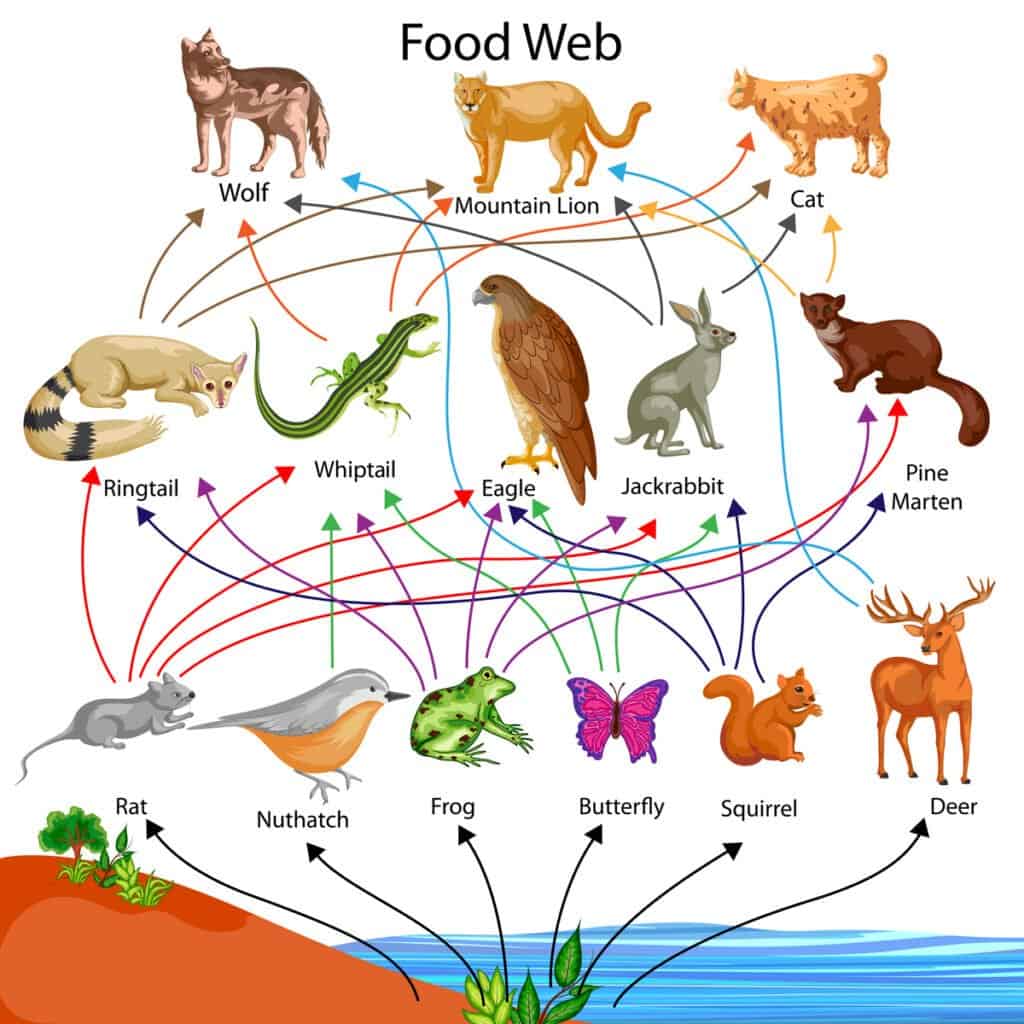Tertiary consumers can be both carnivores and omnivores and receive nutrition from all lower consumers.
Tertiary Consumer Meaning
Tertiary consumers are animals at the top of the food chain capable of eating both secondary and primary consumers. Species in this trophic level are typically apex predators and usually hyper-carnivorous or omnivorous. These predators hunt for their food and are considered the strongest and most aggressive animals in their environment.
There are three consumers in the food chain: primary, secondary, and tertiary. Herbivores are considered primary consumers, while carnivores are secondary. Tertiary consumers can be both carnivores and omnivores and receive nutrition from all lower consumers.

Tertiary consumers are animals at the top of the food chain capable of eating both secondary and primary consumers.
©Vecton/Shutterstock.com
Tertiary Consumer Pronunciation
Tertiary is pronounced tur | tee | eh | ree.
Tertiary Consumer Examples
Some examples of tertiary consumers include sharks, sea lions, eagles, hawks, lions, tigers, crocodiles, pythons, and polar bears. These animals rule their range, eating both secondary and primary consumers and easily defending their territories from other species. Many tertiary consumers also don’t have to compete for food with others because they are often apex predators. Although this isn’t always true because animals, like birds of prey, will compete for food and territories.

Many tertiary consumers don’t have to compete for food with others because they are often apex predators.
©Jim Cumming/Shutterstock.com
What is the Function of a Tertiary Consumer?
An animal’s trophic level is its position on the food chain. Tertiary consumers occupy the highest trophic level, with no known predators. However, when they die, their bodies become food for decomposers and scavengers.
These animals at the top of the food chain play an essential role in the balance of an ecosystem. They control the population levels of those below them, which is vital in preventing a trophic cascade. For instance, if fox populations become too abundant, it puts pressure on the rabbit populations. But if hawks predate on the foxes, the rabbit population stays balanced. And on the flip side, if a predator, like a wolf, doesn’t consume the deer, it can lead to overgrazing and destroy the habitat.



